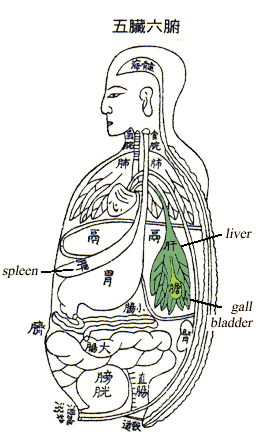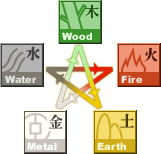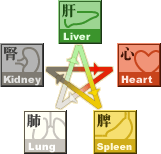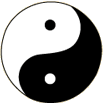Liver Cancer
Liver Cancer
by Dr. Ken Wang
The liver is a large wedge shaped organ found in the upper right side of the abdominal cavity. It is essential for the digestion and metabolism of food, breakdown of toxins and drugs, production of blood clotting factors and storage of blood.
Liver cancer is one of the most common fatal cancers in many Asian and African countries. Less than 5% of patients survive five years after diagnosis. It is much less common (about 50 times less) in North America and Europe where it is still considered rare. However, rates are rising in some western countries such as Australia. This is thought to be due to a rise in Hepatitis B and Hepatitis C virus infection rates, both of which are major causes of liver cancer. It may be also attributed to a rise in emigration of people from countries where liver cancer is common.
In Traditional Chinese Medicine (TCM), liver cancer is associated with the presence of an “abdominal mass” referred to as “zheng” and “jia”. “Zheng” is a palpable and fixed mass in the abdomen with localized pain. “Jia,” is an abdominal mass, which occurs intermittently and has pain that can move within the abdomen. Since TCM does not focus on anatomical pathological (disease) changes, the exact location of the abdominal mass is not as important as figuring out the disharmony pattern which causes the mass to occur.Â
Early TCM medical literature described symptoms similar to our modern day understanding of liver cancer. One example is the “xi fen” disorder, which is the ancient medical name for lumps found at the left flank region (below the chest). Other symptom categories that have close relationships with liver cancer include abdominal distention, jaundice and abdominal fullness and oppression. Both oppression and fullness are TCM symptoms mainly caused by stagnation of qi flow (vital energy) in the chest.
In western medicine, liver cancer may be classified as either being benign, meaning cancer that does not spread, or malignant, meaning cancer that can spread as primary and secondary liver tumors. Secondary liver cancer refers to a tumor, which has metastasized from other organs.Â
This article will mainly discuss primary hepatocellular carcinoma, a type of cancer that originates in the liver.Â

TCM Representation of the liver, spleen and gall bladder organsÂ
Â
Causes
In TCM, the causes of liver cancer can be divided into inherited factors and environmental factors.
1. Inherited factors:
Some individuals develop liver cancer because they have inherited susceptible genes from their parents.Â
2. Environmental factors:
These include:Â
| Diet: Over-consumption of alcohol and eating improperly cleaned food can upset the digestive health, which is known as spleen disharmony. | |
| Lifestyle:Â Over-exhaustion can lead to body disharmony. | |
| Living:Â Environment such as a wet climate |
Both inherited and environmental factors may result in spleen deficiency, stagnation of qi and the accumulation of dampness, which can progress to liver cancer. These terms are further explained in the symptom sections.
Symptoms
Individuals who are suffering from liver cancer usually develop a spleen deficiency first. In TCM, the spleen is largely responsible for the body’s digestive functions, which includes transforming water and nutrients into vital energy or qi, which in turn, is used by the body to carry out its daily functions. If liquids are unable to be transformed or digested properly by the spleen, dampness accumulates. When the dampness accumulates without being transformed into qi, it will turn into heat, which damages the body and makes a person sick. Sometimes when the dampness accumulates in the abdomen, abdominal distention will occur.Â
If the spleen deficiency remains uncontrolled, qi movement becomes stagnant. Qi commands the blood so when qi stagnation persists, blood stasis (lack of smooth blood flow) is the result. When this condition continues to be uncontrolled for a long time, individuals develop excessive heat, which typically occurs in the stomach. It is often referred to as the heat of yang ming; because, the stomach is closely associated with the stomach meridian. When the liver cancer progresses to the late stage, the heat will exhaust the physiological fluids in the body leading to a condition known as yin deficiency. (See below).
Depending on the stage of the liver cancer, individuals will show one or more of the disharmony patterns listed below. The disharmony patterns can progress to other patterns and deficiencies not listed here if the conditions cannot be reversed back to healthy body functions.Â
Types of Disharmony Patterns:
a) Spleen deficiency
As mentioned before, the spleen is important for transformation of nutrients and water. A deficiency can lead to an accumulation of unhealthy dampness, triggering weight loss, malaise, poor appetite and loose stools. Generally, the tongue does not appear red and the pulse feels soft or soggy, which are signs of dampness.
b) Stagnation of Qi
When qi becomes stagnant, the qi movement in the body will be disturbed, leading to a feeling of fullness in the upper abdomen. Individuals may have a poor appetite and flatulence (gas). With this condition, the pulse may be wiry or smooth. The tongue will have a thin and greasy coating and usually does not appear red.
c) Influence of dampness and heatÂ
Under the influence of heat, which belongs to yang evils, individuals may have irregular fevers and dark urine. As a result of dampness and heat in the liver and gall bladder, the normal regulation of bile will be affected. Bile is made in the liver and stored in the gallbladder where it is then excreted into the intestines to digest food. In TCM, jaundice occurs when the bile is “spilt over” or backed up into the liver. Since heat causes these problems, the pulse feels rapid and smooth if dampness is present. The tongue usually appears red with a yellow and greasy coating, also indicating heat and dampness in the body.
d) Excessive heat
With excessive heat, individuals may develop a fever with varying temperatures. Before developing a fever, some individuals may experience an aversion to feeling cold. Those who have a greater aversion to cold usually develop a higher temperature. For individuals with liver problems, the fever comes on at regular and particular times, usually in the afternoon, and it goes away without treatment. However, there are some cases, where individuals have sustained fevers. Sweating occurs once the fever has broken. With excessive heat, the pulse usually feels rapid and smooth, and the tongue may appear dry. Sometimes individuals without a fever will be classified as having excessive heat because of a hot feeling in the liver region.
e) Blood stasis
Blood stasis occurs when there is not a smooth flow of blood in a particular area of the body. Individuals with liver cancer who have blood stasis experience sharp pain in the liver region. The pain will be aggravated when the affected area is pressed, and it is usually fixed in a certain position. The pulse feels thin and choppy, and the tongue will appear dark with purple spots.
f) Yin deficiency
In TCM, material and fluid-like substances belong to yin. If a person is yin deficient, he or she will have a dry mouth and thin pulse. Since yin and yang always aim to be in balance, a yin deficiency can lead to a relative excess of yang. It is relative; because, even though the symptoms look like an excess problem, they originate from a deficiency and therefore need to be treated as a yin deficiency and not a yang excess. Symptoms of a relative excessive yang include irritability, a rapid pulse and a red tongue. Another symptom of yin deficiency is a tongue that has a shiny or peeled appearance if the tongue does not have a coating present.
Symptoms Associated with Liver Cancer:
Early stage liver cancer can be difficult to detect because there are few obvious symptoms. When the disease progresses to the intermediate and late stages, symptoms will become more prominent and noticeable.Â
General symptoms:Â
1. Pain in the “liver” region (the flank and upper abdomen)Â
There are mainly two types of pain; dull and sharp. Sharp pain can be aggravated by pressure. It is usually caused by blood stasis (when blood is unable to flow smoothly), which is considered an excessive type disharmony. In TCM, an excessive type disharmony usually refers to a disharmony pattern caused by an excess of evils in the body. (These excesses are usually external forces outside the body that invade it and cause disease. This includes things such as heat, wind, dampness, cold and dryness.) In order to treat this disharmony, the evils need to be removed. If the disharmony were a deficiency type, the treatment would aim to replenish the deficient aspect instead of removing the evils. On the other hand, dull pain is caused by stagnant qi. Smooth flow of qi and blood are necessary for the body to function properly. If disharmony affects their flow, health problems will occur. Pain is a symptom of poor flow of qi and/or blood.
2. Mass in the upper abdomen
In TCM, this type of mass, known as “zheng” or an “accumulation,” is described in the definition section. There are several theories about how “zheng” develops. One theory is that it is caused by stagnant qi or blood stasis. Another theory is that it results from a spleen deficiency.
3. Other common symptoms
As a result of a spleen deficiency, individuals with liver cancer can feel general sluggishness because the spleen is responsible for “ruling” the four limbs. The spleen is also responsible for transforming nutrients and water into qi or vital energy for the body. Without healthy transformation, dampness accumulates in the body and causes many types of health problems. For example, accumulated dampness in the large intestine will lead to symptoms of diarrhea and nausea.
Spleen deficiency is often associated with abdominal distention. Being an earth element, the spleen should be able to contain and control the direction of water flow in the body. When spleen disharmony occurs, water is not controlled properly and fills up the abdomen resulting in abdominal distention. In western medicine, the symptom is known as ascites.Â
Abdominal distention located in the upper abdomen is known as “pi man,” which means feeling fullness and oppression. Both oppression and fullness are mainly caused by stagnation of qi flow in the chest. If distention of the whole abdomen occurs, the condition is known as “gu zhang.” A spleen deficiency rather than improper qi flow mainly cause “gu zhang.”Â
Diagnosis
Diagnosis is based on four examination techniques. The first is “questioning.” The TCM practitioner will want to know what the individual’s current complaints are, and will need their medical history and family health history. The second technique is “observation.” Physical features of the body such as the face, tongue, hair, nails, sputum (mucus that is coughed up) and examining the area of pain all offer clues as to what the problem may be. Observation of the tongue is particularly used as a gage to assess illness. The third technique is “hearing and smelling.” Smelling the sputum and breath and listening to the sounds coming from the chest offer additional clues. The last technique used in examination is “touching.” Feeling the pulse is a cornerstone of TCM diagnosis and gives the TCM practitioner a lot of information about the body’s imbalance. If the TCM practitioner suspects there might be a serious problem that Chinese medicine alone cannot treat he or she may recommend that the individual see a western doctor for further follow up.Â
From a TCM point of view, liver cancer is generally classified according to the disharmony patterns each individual has. The symptoms section reviews the different disharmony patterns in detail.
Types of Disharmony Patterns:Â
| Spleen Deficiency | |
| Stagnation of qi | |
| Influence of Dampness and heat | |
| Excessive Heat | |
| Blood Stasis | |
| Yin Deficiency |
When classifying the patterns there are several important points that need to be differentiated:Â
1. Classification of pain at the liver region
It is important to distinguish between pain due to stagnation of qi and pain due to blood stasis because it affects the choice of herbs and treatment strategies used. Pain due to qi stagnation usually feels dull while pain due to blood stasis feels sharp. In addition, it is also important to know whether a person with liver cancer has abdominal distention due to blood stasis because the patient may faint as a result of the disharmony.
2. Classification of abdominal distention Abdominal distention should be differentiated between qi stagnation and constrained liver qi because each is treated differently. Distention due to qi stagnation is known as “pi man” in TCM. It is characterized by the distention in the central upper abdomen, and it is usually aggravated after meals. On the other hand, constrained liver qi distention is characterized by distention at both flanks (below the chest) with dull pain and discomfort. Eating meals does not aggravate abdominal distension.Â
3. Classification of fever
In addition to fever, liver cancer patients usually have signs of exterior disharmony. Exterior disharmony is similar to having a cold or the flu. Symptoms include an aversion to cold, a high temperature, and a floating pulse. However, fevers associated with liver cancer usually come in the afternoon and is associated with profuse sweating and a hot feeling over the liver region.Â
Treatment
n TCM, liver cancer is mainly treated according to the classification of the individuals’ disharmony pattern.
1. Spleen Deficiency
The therapeutic aim is to strengthen the spleen. This decoction example includes the four herbs, which are a well-known combination for boosting spleen health and spleen qi in the body:Â
Si Junzi DecoctionÂ
| Dang shen | Tangshen |
| Bai Zhu | Largehead Atractylodes Rhizome |
| Fu Ling | Indian Bread |
| Gan Cao | Liquorice Root |
In this decoction, dang shen invigorates qi. Bai zhu strengthens the spleen. Fu ling promotes diuresis (urination) to eliminate dampness, and Gan Cao moderates the other herbs.Â
Modification may be made to the basic Si Junzi decoction in order to promote the regulation of qi. An example includes:Â
Xiangsha Liujun pillsÂ
| Dang shen | Tangshen |
| Bai Zhu | Largehead Atractylodes Rhizome |
| Fu Ling | Indian Bread |
| Gan Cao | Liquorice Root |
| Ban xia | Pinellia Tuber |
| Chen pi | Dried Tangerine Peel |
| Mu xiang | Costusroot |
| Sha ren | Villous Amomum Fruit |
In this decoction, the basic four herbs in Si Junzi Decoction help strengthen the spleen. In addition, Ban xia and Chen pi regulates qi circulation and eliminates dampness and phlegm. Mu xiang and Sha ren further promote the qi circulation. The decoction is especially good for patients with spleen deficiency and stagnation of qi.Â
2. Abdominal distention (ascites)
Xiangsha Liujun pills can further be modified to treat abdominal distention. Modification is as follows.Â
| Dang shen | Tangshen |
| Bai Zhu | Largehead Atractylodes Rhizome |
| Fu ling (outer cortex) |
Indian Bread Peel |
| Gan Cao | Liquorice Root |
| Ban xia | Pinellia Tuber |
| Chen pi | Dried Tangerine Peel |
| Mu xiang | Costusroot |
| Sha ren | Villous Amomum Fruit |
| Che qian zi | Plantain Seed |
| Da fu pi | Areca Peel |
In addition to the benefits of treating spleen deficiency and qi stagnation, the decoction also contains Che qian zi and Da fu pi, which can further relieve stagnation, promote diuresis (urination) and relieve edema (swelling) and dampness.
3. Stagnation of qi
The therapeutic aim is to resume the circulation of qi in the middle burner including the stomach and spleen.Â
Zhishi Xiaopi PillsÂ
| Dang shen | Tangshen |
| Bai Zhu | Largehead Atractylodes Rhizome |
| Fu Ling | Indian Bread |
| Gan jiang | Dry Ginger |
| Ban xia qu (one type of Ban xia) | PinelliaTuber |
| Zhi shi | Immature Orange Fruit |
| Hou po | Officinal Magnolia Bark |
| Huang liang | Golden Thread |
| Mai ya | Germinated Barley (fried) |
In this decoction, Zhi shi is the main herb for promoting qi circulation, dispersing the stagnation and helping to remove the abdominal mass. It is further supported by Hou po. Both Ban xia and Gan jiang are pungent in taste. In TCM, pungent tasting herbs can be used to help to remove a mass. Chinese terms describe this as “opening” the mass. Huang liang has bitter and cold properties that can clear away heat and remove dampness. Together with the bitter taste of Zhi shi and Hou po, they descend the qi, which also helps to disperse the mass. The whole decoction is supported by Dang shen, Bai zhu, Fu ling, which are all good herbs in invigorating spleen and removing dampness.Â
4. Influence of dampness and heat
Yinchenhao Decoction
| Yin chen | Virgate Wormwood Herb |
| Zhi zi | Cape Jasmine Fruit |
| Da huang | Rhubarb |
In the decoction, Yin chen is the main herb for clearing away heat and dampness and relieving jaundice. Zhi zi has cold and bitter properties, which eliminates heat and guides the dampness and heat to move downwards by penetrating the triple burner meridian. In TCM, the triple meridian is regarded as the distribution channels for body fluids. Da Huang is also cold and bitter. Not only can it remove heat, dampness and stasis, but is especially helpful in guiding the heat to leave the body through stools by penetrating the large intestine meridian.
5. Excessive heatÂ
Baihu DecoctionÂ
| Shi gao | Gypsum |
| Zhi mu | Common Anemarrhena Rhizome |
| Gan Cao | Liquorice Root |
In this decoction, both Shi gao and Zhi wu are cold herbs. Shi gao is also pungent and sweet. The decoction is very useful for removing extreme heat in the body, and it is supported by the Zhi wu herb, which is also cold and bitter. Gan cao is essential for protecting the stomach and spleen, and preventing the cold herbs from hurting the spleen. The decoction also has the added benefit of nourishing the body’s yin.Â
6. Blood stasis
Shixiao powder
| Pu huang | Cattail pollen |
| Wu ling zhi | feces of Trogoterus xanthipes |
In this decoction, both Pu huang and Wu ling zhi promote blood circulation, remove blood stasis and relieve pain.Â
7. Yin deficiencyÂ
Sancai decoctionÂ
| Taizi shen | Heterophylly Falsestarwort Root |
| Tian dong | Cochinchinese Asparagus Root |
| Sheng di | Rehmannia Root |
In this decoction, Taizi shen is good for invigorating qi and promoting the production of body fluids. All three herbs work together to replenish yin deficiency in the body. Tian dong nourishes yin, clears away heat, moisturizes the lungs and benefits the kidneys. Sheng di cools the blood and nourishes yin to promote the production of body fluids.:
Prevention
| From a TCM point of view, it is important to pay attention to the following points in order to prevent the occurrence of liver cancer. | |
| Healthy diet | |
|  | Diet is important because it affects the spleen. In TCM, the spleen is responsible for extracting the nutrition from ingested foods and fluids and transforming them into qi and blood. It is also regarded as the source of these substances. It is such an important organ that it is sometimes referred to as the “foundation of afterbirth (postnatal) existence”. As previously discussed, spleen deficiency is one of the main causes for liver cancer. Symptoms like abdominal distention, ascites (fluid in the abdomen) are all related to spleen function and health. The spleen has a close relationship with the liver. Being an earth element, the spleen can easily be inhibited and restricted by the liver, a wood element, if it becomes deficient. Therefore, in order to maintain good harmony between the spleen and liver, it is particularly important to pay attention to strengthening spleen health.
In order to maintain good spleen health, we should avoid eating too much spicy and “cold” food. “Cold” food includes those that are cold in temperature such as ice cream and refrigerated food, and those that have cold properties such as green beans. Avoid taking too much alcohol because alcohol is warm in property, and may aggravate the dampness and heat influences that usually occur in spleen deficient individuals. |
| Â | Â |
| Â | 
This cycle shows how the five elements restrict one another |
| Â |
 |
| Â | This cycle shows how the five organs restrict one another |
| Â | Index:Â |
| Â | Â |
| In TCM and western medicine, moderate alcohol consumption is recommended. It is now known that alcohol is a common reason for causing cirrhosis (irreversible damage of the liver), which is linked to the development of liver cancer. It is a good idea to discuss with your health care provider as to how much alcohol consumption is considered moderate since this may vary from person to person. | |
| Â |
 Don’t over consume alcohol |
| Â | Â |
| Healthy lifestyle and health maintenance | |
| Â | TCM stresses maintaining harmony between our internal body and external environment for achieving optimal health. Therefore, it is essential to keep the body fit and have enough rest. Over-exhaustion is one of the main causes for body disharmony, which may eventually lead to liver cancer. Early detection of unhealthy conditions and disharmony patterns can prevent the body from progressing to liver cancer. These include detecting signs and symptoms associated with spleen deficiency, the influence of dampness, stagnation of qi, excessive heat, blood stasis and yin deficiency.(See symptoms section for detailed symptoms of the disharmony patterns.)Efforts should be taken to resume the body’s balance when disharmony occurs and not let it persist because liver cancer usually occurs from long-term imbalances. By maintaining a balanced and healthy lifestyle, liver cancer can be prevented. |
| Â |
 maintaining a healthy balanced lifestyle overall will help prevent cancer |

